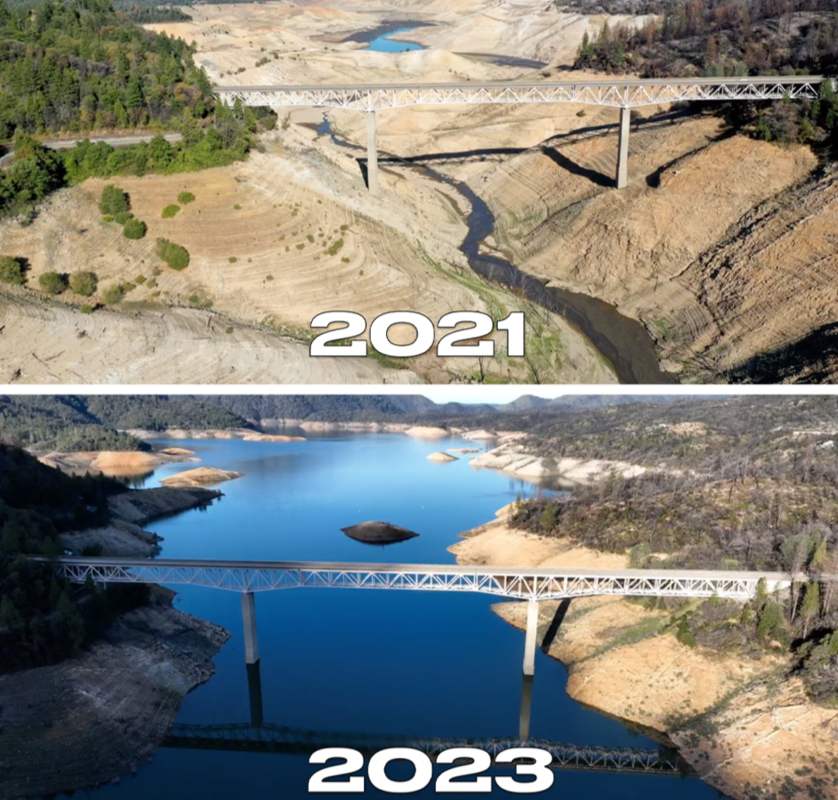Lake Oroville, California's second-largest reservoir, has made an impressive recovery this year after several years of massive drought, reports CNN.
The news outlet posted before and after photos to its Instagram account. The first, taken in 2021, shows a wasteland of dry soil. CNN reports that the barely visible trickle of water in the photo represents 61% of the reservoir's historical amount for the time of year.
By contrast, the after photo — at 115% in 2023 — shows tranquil blue water stretching into the distance.
The improvement is due to huge storms that hit California in January, says CNN. While the heavy weather caused flooding, it left behind reserves of water that residents will depend on for the rest of this year.
But even that may not be enough.
"For every day it doesn't rain or snow during our wettest months, we are drying out," Margaret Mohr told CNN. Mohr is deputy director of communications for the California Department of Water Resources, which manages the reservoirs and other water sources.
While this reservoir is doing well for now, underground water reserves haven't recovered from the years of drought California has suffered. One big rainstorm isn't enough. The state needs regular snow and rainfall during the winter to get through its long, hot summers.
As CNN explains, the "megadrought" is due to rising temperatures around the globe, which have not only led to hotter summers but have also changed weather patterns.
Extreme weather events like hurricanes and droughts are becoming more common worldwide because of the temperature increase. To fight the change, countries around the globe have joined together in what's called the Paris Agreement to lower their production of heat-trapping gases that warm the earth.
"A lot of uncertainty remains about the next two months," Mohr told CNN, "and water managers are maintaining reservoirs to hold as much water supply as possible."
Join our free newsletter for cool news and cool tips that make it easy to help yourself while helping the planet.









